Posts Tagged: UC Davis Bee Symposium
'Bee-ing' There at the Dixon May Fair
"You can learn a lot from these displays," a fairgoer at the 144th annual Dixon May Fair commented. She was looking at an educational display with...
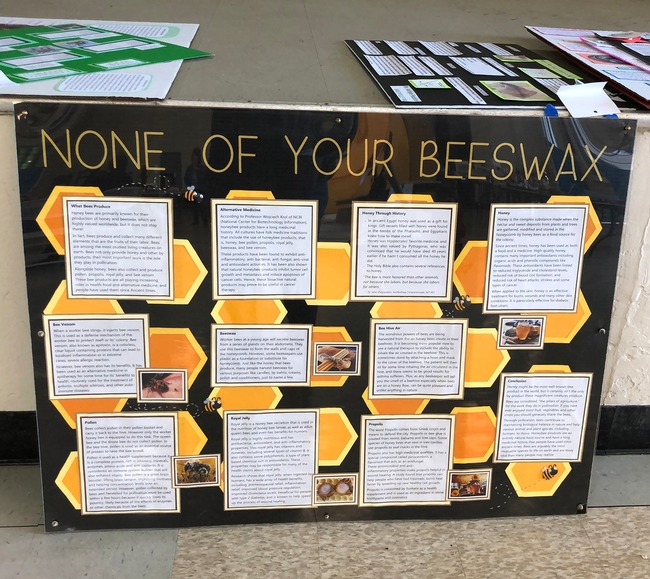
Dixon 4-H'er Ryan Anenson of the Tremont 4-H Club created this award-winning educational display, "None of Your Beeswax" for the Dixon May Fair. (Photo by Kathy Keatley Garvey)
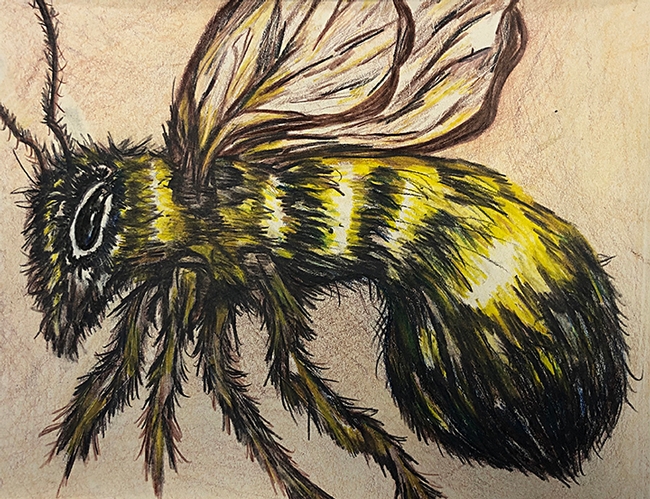
Dixon 4-H'er Madeline Giron sketched this color pencil drawing of a bee, on display in the Youth Building (Denverton Hall) at the Dixon May Fair. (Photo by Kathy Keatley Garvey)
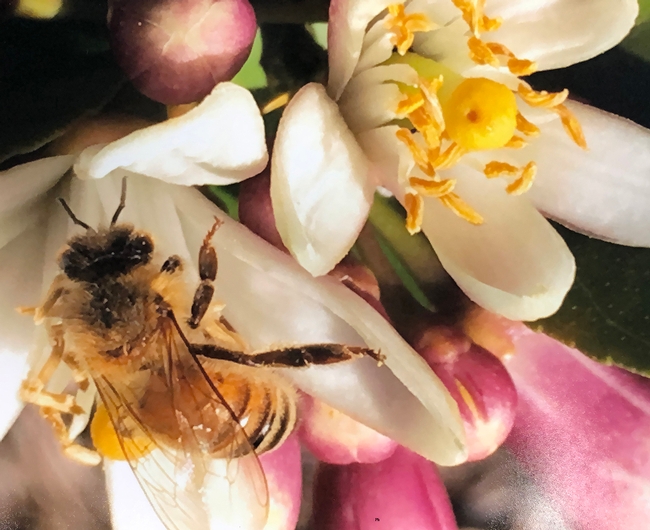
This photo by Markus Taliaferro of the Suisun Valley 4-H Club shows a honey bee sipping nectar.
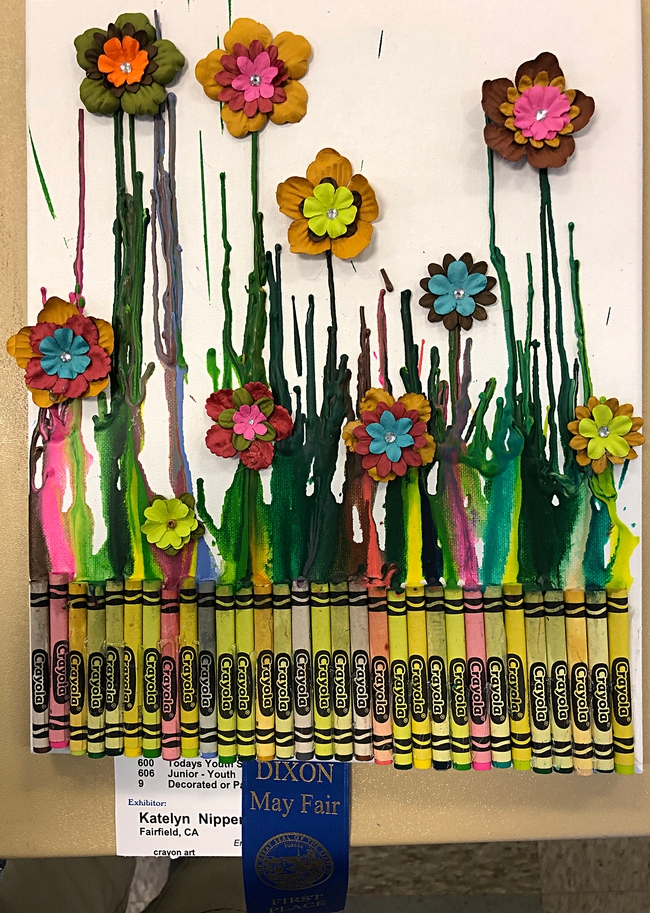
Just add pollinators! Katelyn Nipper of Fairfield created this innovative illustration of brightly color flowers and crayons.
Pollinator Gardens Make Us Happy: Get Ready for National Pollinator Week!
Are you ready for National Pollinator Week, June 18-June 24? A spectacular pollinator garden that's a "must-see" is Kate Frey's pollinator garden at...
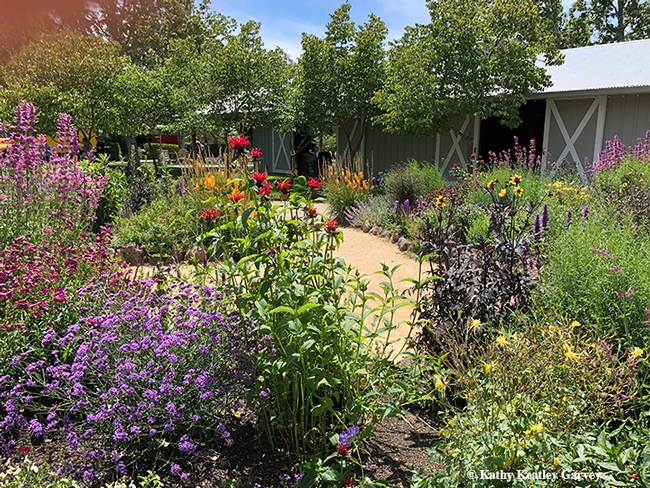
This is an overview of part of Kate Frey's pollinator garden at Sonoma Cornerstone. (Photo by Kathy Keatley Garvey)
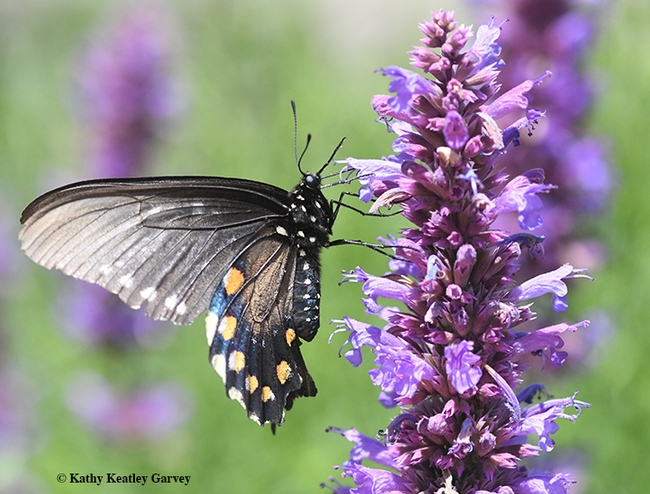
A pipevine swallowtail, Battus philenor, nectars on on Nepeta tuberosa. (Photo by Kathy Keatley Garvey)
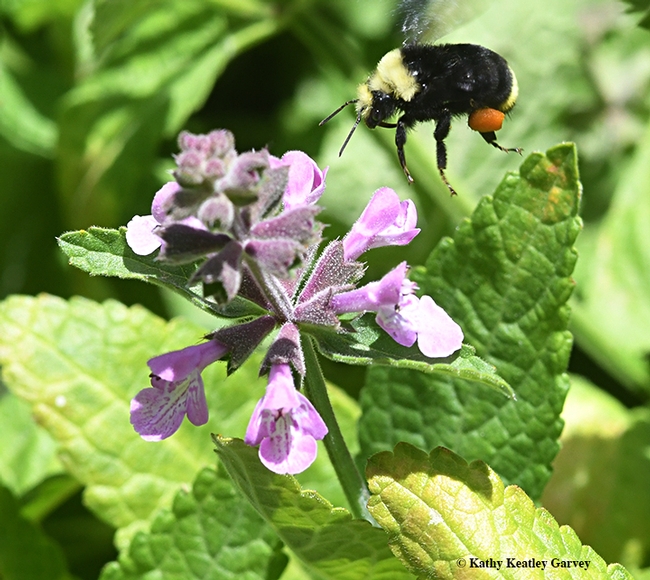
A pollen-packing yellow-faced bumble bee, Bombus vosnesenskii, heads for Stachys bullata. (Photo by Kathy Keatley Garvey)
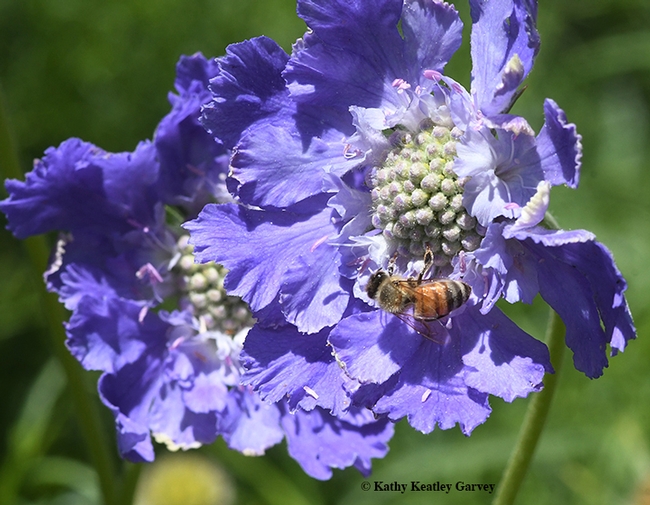
This honey bee can't get enough of Scabiosa "Fama Blue." (Photo by Kathy Keatley Garvey)
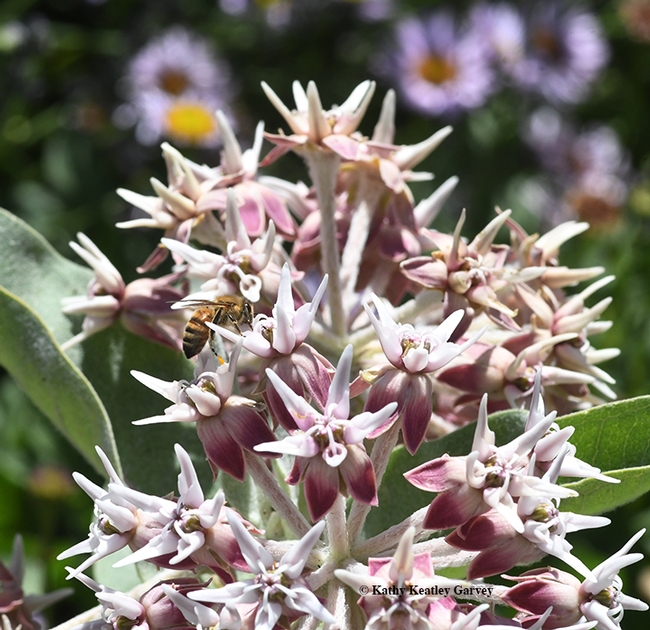
Milkweed is not only the host plant of monarch butterflies, but honey bees like it, too. This is the showy milkweed, Asclepias speciosa. (Photo by Kathy Keatley Garvey)
Kate Frey: Bee Gardens Make Us Happy
Whether you plant them, nurture them, or walk through them, bee gardens make us happy. That's what world-class pollinator garden designer,...
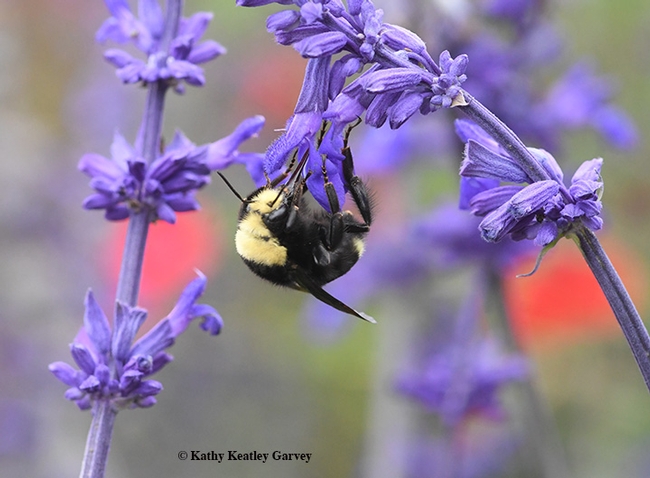
A yellow-faced bumble bee, Bombus vosnesenskii, on Salvia "Indigo Spires" in Kate Frey's pollinator garden at the Sonoma Cornerstone. (Photo by Kathy Keatley Garvey)
Bumble Bees on the Move
Bumble bees stole the show during the Graduate Student Poster Research Competition at the fourth annual UC Davis Bee Symposium, themed "Keeping Bees...
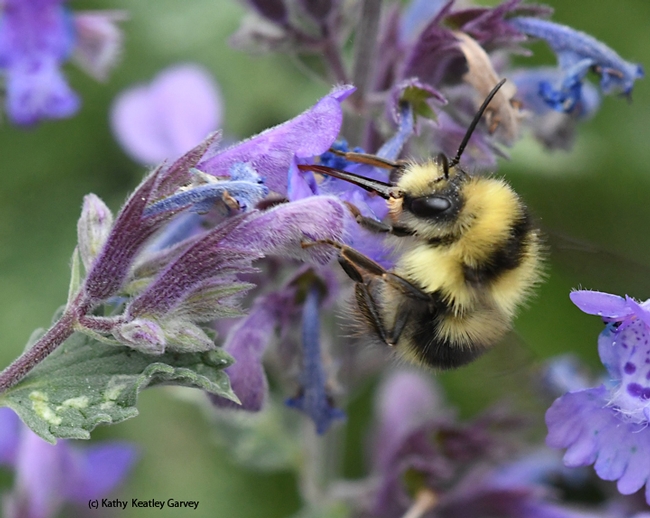
A bumble bee, Bombus melanopygus, nectaring on lavender in Vacaville, Calif. (Photo by Kathy Keatley Garvey)
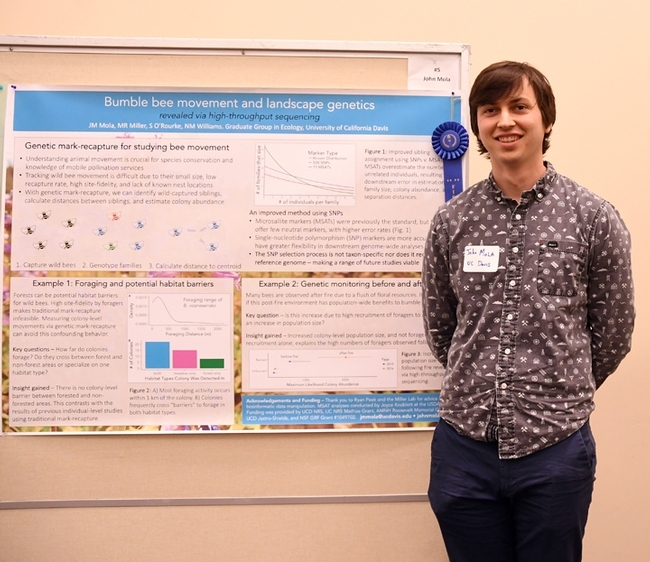
UC Davis doctoral student John Mola won the Graduate Student Research Poster Competition at the UC Davis Bee Symposium with his work on bumble bees. (Photo by Kathy Keatley Garvey)
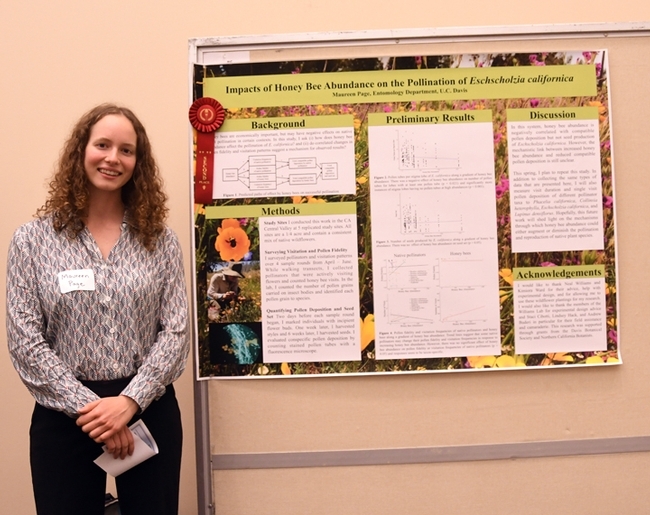
UC Davis doctoral student Maureen Page stands by her research poster on honey bees that won second place at the UC Davis Bee Symposium. (Photo by Kathy Keatley Garvey)
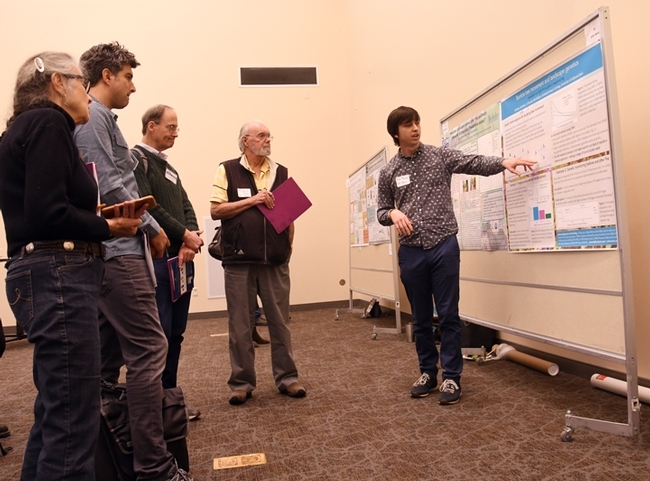
UC Davis doctoral student John Mola explains his research to the judging panel. From left are Mea McNeil, timer; Santiago Ramirez of the UC Davis Evolution and Ecology faculty; Tom Seeley of Cornell, the keynote speaker at the symposium; and Robbin Thorp, distinguished emeritus professor of entomology at UC Davis. (Photo by Kathy Keatley Garvey)
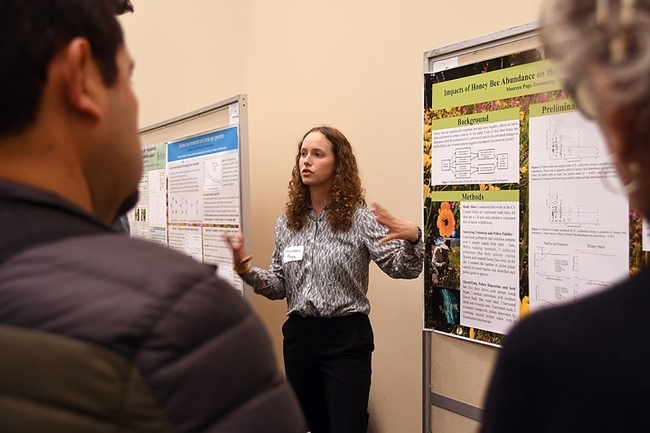
UC Davis doctoral student Maureen Page tells judges that honey bees may have negative impacts on native bees and native plant communities in certain contexts. (Photo by Kathy Keatley Garvey)
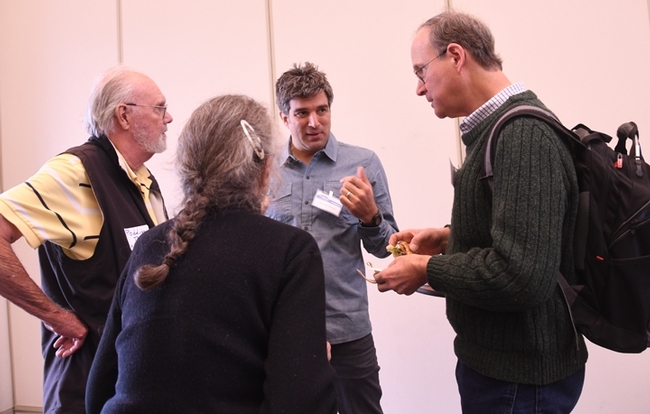
The panel of judges conferring. In the foreground is timer Mea McNeil. In back (from left) are judges Robbin Thorp and Santiago Ramirez of UC Davis, and Tom Seeley of Cornell. (Photo by Kathy Keatley Garvey)
Tom Seeley: 'Bees Are Superb Beekeepers'
"Honey bees are superb beekeepers; they know what they're doing." So said bee scientist and author Tom Seeley of Cornell University, Ithaca, N.Y.,...
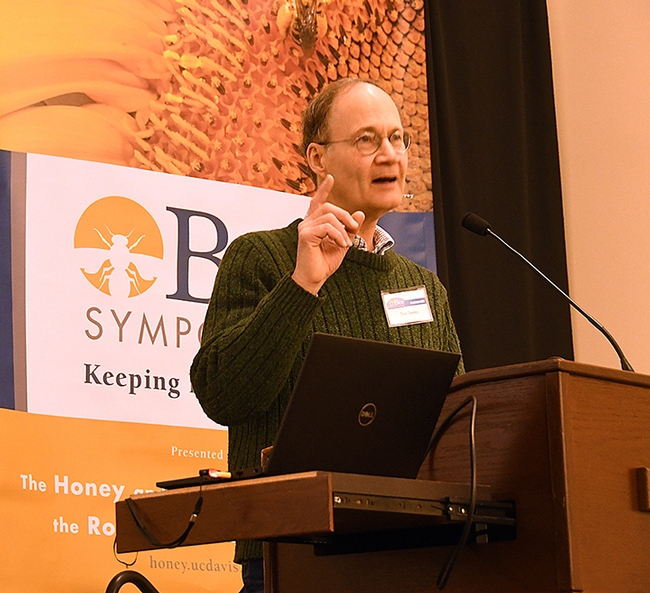
"Honey bees are superb beekeepers; they know what they're doing," keynote speaker Tom Seeley tells the fourth annual UC Davis Bee Symposium. (Photo by Kathy Keatley Garvey)
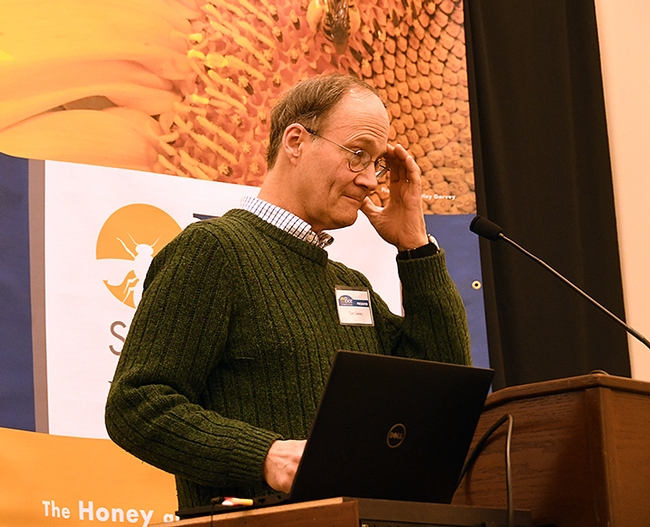
"EVERYTHING that colonies do when they are living on their own (not being managed by beekeepers) is done to favor their survival and their reproduction, and thus their success is contribution to the next generation of colonies," Cornell bee scientist Tom Seeley pointed out. (Photo by Kathy Keatley Garvey)
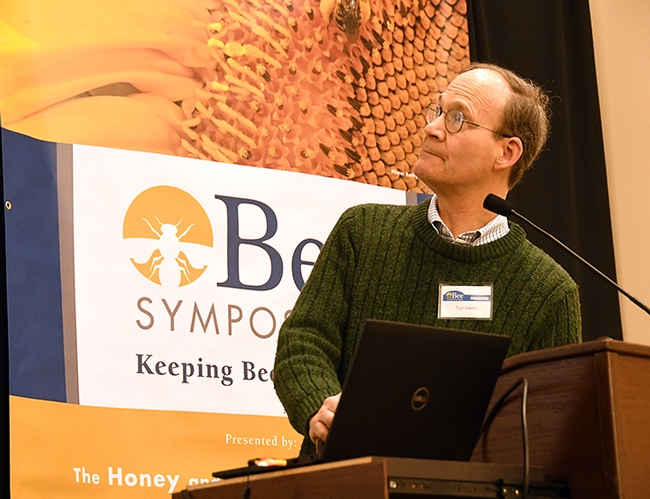
"Darwinian beekeeping is allowing the bees to use their own beekeeping skills fully," keynote speaker Tom Seeley says. (Photo by Kathy Keatley Garvey)
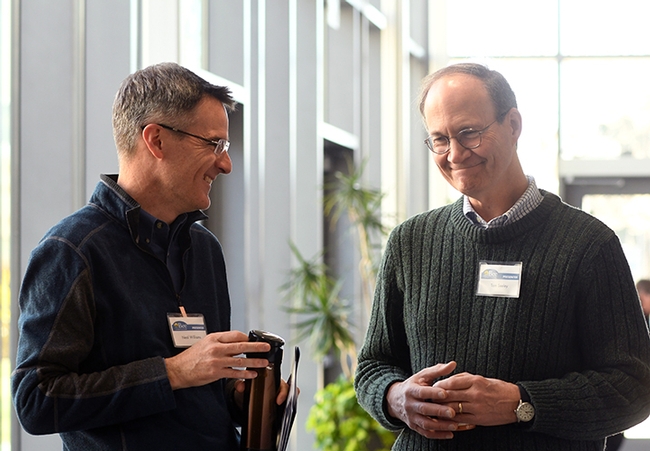
Professor Neal Williams (left) of the UC Davis Department of Entomology and Nematology, shares a laugh with keynote speaker Tom Seeley of Cornell. (Photo by Kathy Keatley Garvey)

